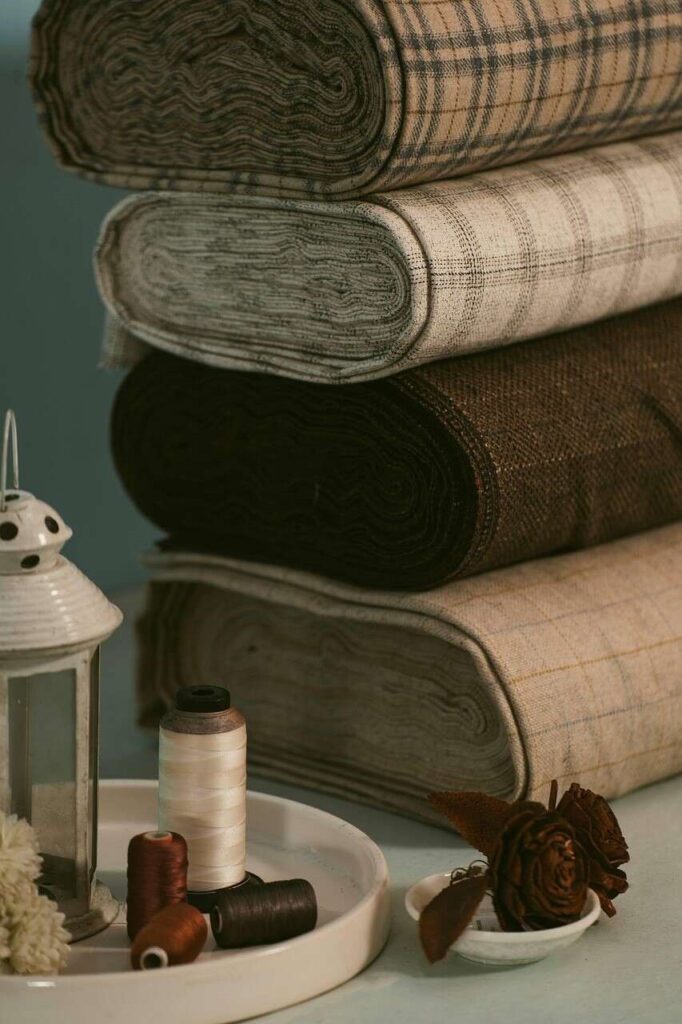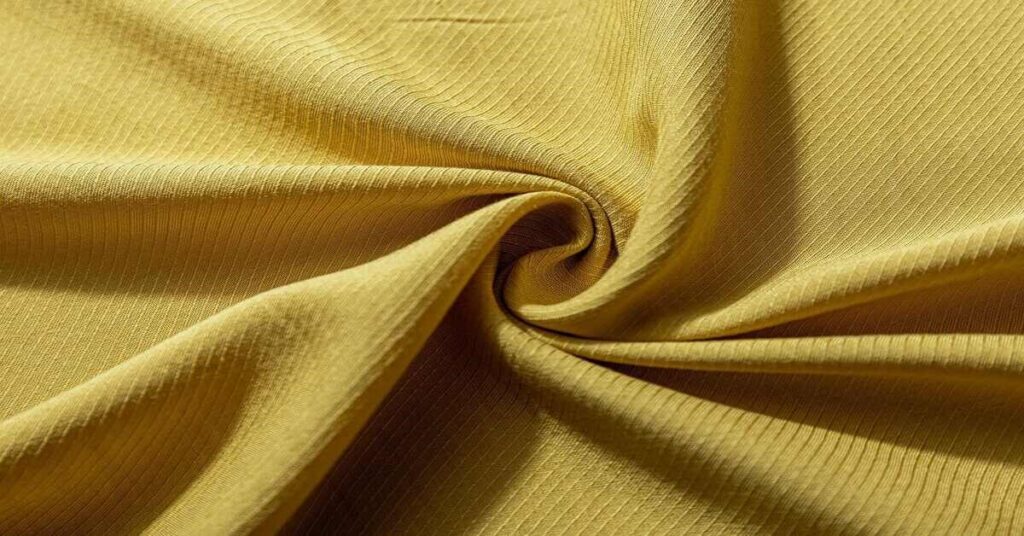Table of Contents
Introduction
“Twill fabric is the ultimate multi-tasker – strong enough for workwear, stylish enough for high fashion, and comfortable enough for everyday wear” I have been in this industry since 1997, and out of years of experience would like to share my knowledge on understanding what is cotton twill fabric used for in various segments.
As said by “Phil Crosby” “Quality is the result of a carefully constructed cultural environment. It has to be the fabric of the organization, not part of the fabric.” Phil Crosby is a renowned businessman known for Zero Defects program at the Martin Company. As the quality control manager of the Pershing missile program,
To understand the science behind this durable fabric along with the advantages and disadvantages of twill weave. You may check my blog “The Science Behind What is Twill Cotton Weave: Why It’s So Durable and Long-Lasting“
This blog contains the history of twill weaves along with types of twill, available market qualities the most valuable comparison with other weave types. So load yourself with this super information.
The history and evolution of twill cotton weave
The textile industry has benefited greatly from the use of twill cotton, a form of fabric that has been around for millennia. Ancient civilizations have employed twill cotton weave to create clothes, bedding, and other textile products throughout recorded history. We’ll examine the rise and history of the twill cotton weave.
History of Twill Cotton
Twill Cotton is a natural fabric. Which is considered sustainable. I have a detailed blog on the topic “A list of best natural fabrics names” where there is tons of information on natural fabric.
Twill cotton weave has been around for thousands of years, with evidence of its use dating back to ancient civilizations such as the Greeks and the Romans. It was used to make clothing, bedding, and other textile products, and was prized for its durability and strength.
During the Middle Ages, twill cotton became increasingly popular in Europe, particularly in England and France. The fabric was used to make garments such as tunics, dresses, and trousers, and was often dyed in bright colors or decorated with intricate patterns.
In the 18th and 19th centuries, the textile industry underwent a revolution with the invention of the power loom, which made it possible to weave fabric on a large scale. This led to the production of twill cotton on an industrial scale, and the fabric became a staple in the fashion industry.

Evolution of Twill Cotton:
Over time, the twill cotton weave has evolved to meet the changing needs of the textile industry. One of the most significant changes has been the development of different types of twill weaves. The basic twill weave involves passing the weft thread over and under the warp threads in a repeating pattern, resulting in a diagonal pattern. However, other twill weaves, such as the herringbone weave and the diamond weave, create different patterns by altering the direction of the diagonal lines.
In addition to different weave patterns, twill cotton has also evolved in terms of its weight, texture, and appearance. Today, twill cotton is available in a wide range of weights, from lightweight fabrics suitable for summer clothing to heavy-duty fabrics for workwear and upholstery. The texture and appearance of twill cotton can also be varied by using different fibers, yarns, and finishes.
What is cotton twill fabric used for? The products that touch our lives every day
Cotton twill is an enduring and adaptable fabric that is utilized in a variety of items that affect our daily life. This kind of cloth is renowned for its resilience to wear and tear, elasticity, and durability. I will analyze and attempt to explain the specific products that cotton twill cloth is frequently used for.
Clothing:
One of the most common uses of cotton twill fabric is in clothing. This fabric is ideal for clothing because of its durability, flexibility, and resistance to wrinkling. Cotton twill is commonly used in making pants, jackets, shirts, and skirts. It is also a popular fabric for workwear, such as uniforms and coveralls, because of its ability to withstand wear and tear
Upholstery:
Due to its durability and stain resistance, cotton twill fabric is often utilized in upholstery. Throw pillows and cushions are frequently made out of this fabric, as well as covers for chairs and couches. Because of its resistance to wear and tear, it is also utilized for automobile seat covers and other automotive upholstery.
Accessories:
Cotton twill fabric is used in a variety of accessories, including hats, bags, and wallets. Its durability and flexibility make it ideal for these products, which need to withstand daily wear and tear.
Home Goods:
Cotton twill fabric is commonly used for home goods, such as curtains, tablecloths, and napkins. Its durability and resistance to wrinkling make it ideal for these products, which are frequently washed and used. Cotton twill is also used for bed linens, such as sheets and pillowcases, because of its softness and breathability.
Industrial Applications:
Cotton twill fabric is also used in industrial applications, such as conveyor belts, industrial bags, and tarps. Its durability and resistance to wear and tear make it ideal for these applications, which require heavy-duty fabrics that can withstand harsh conditions.
Types of twill fabric and their properties
Twill fabric is a well-liked and adaptable material distinguished by its distinctive diagonal pattern. The way the cloth is woven results in this pattern, with each weft thread crossing two or more warp threads before tucking beneath one or more of them. There are various twill fabric varieties, each with special qualities and traits. In this section, we’ll examine the most popular twill fabric types and their characteristics.
Cotton Twill:
Cotton twill is one of the most common types of twill fabric. It is made from 100% cotton fibers and is known for its durability, flexibility, and breathability. Cotton twill fabric is soft to the touch and is easy to care for, making it a popular choice for clothing, upholstery, and home decor. It is available in a wide range of weights and can be dyed in a variety of colors.

Wool Twill:
Wool twill is a type of twill fabric that is made from 100% wool fibers. It is known for its warmth, softness, and durability. Wool twill fabric is often used for suits, coats, and other outerwear because of its insulating properties. It is also used for blankets, throws, and other home decor items.
Silk Twill:
Silk twill is a type of twill fabric that is made from 100% silk fibers. It is known for its softness, sheen, and drape. Silk twill fabric is often used for scarves, ties, and other accessories because of its luxurious feel. It is also used for dresses, blouses, and other clothing items.
Polyester Twill:
Polyester twill is a type of twill fabric that is made from polyester fibers. It is known for its durability, wrinkle resistance, and easy care. Polyester twill fabric is often used for workwear, such as uniforms and coveralls, because of its resistance to wear and tear. It is also used for outdoor gear, such as tents and backpacks, because of its water resistance.

Denim:
Denim is a type of cotton twill fabric that is known for its strength and durability. It is often used for jeans, jackets, and other clothing items because of its ability to withstand wear and tear. Denim fabric is available in a variety of weights and colors, and it can be dyed or printed to create unique patterns and designs.
Market qualities of cotton twill and cotton drill fabric
If you are planning to start a new project on cotton twill or drill and want to consider the available qualities that can be used in it. We are listing below the regular qualities available in Cotton twill and drill. Along with their corresponding GSM.
07 x 07 / 68 x 38 – 394 GSM – Drill Weave
16 x 12 / 108 x 56 – 305 GSM – Drill Weave
10 x 10 / 68 x 38 – 276 GSM – Drill Weave
16 x 12 / 96 x 48 – 267 GSM – Drill Weave
16 x 10 / 88 x 32 – 240 GSM – Drill Weave
20 x 16 / 108 x 26 – 237 GSM -Drill Weave
20 x 20 / 108 x 56 – 213 GSM – Drill Weave
25 x 20 / 108 x 54 – 187 GSM – Drill Weave
20 x 20 / 96 x 44 – 182 GSM – Drill Weave
25 x 20 / 108 x 48 – 180 GSM – Drill Weave
16 x 20 / 88 x 36 – 179 GSM – Drill Weave
30 x 30 / 132 x 72 – 177 GSM – Twill Weave
30 x 30 / 124 x 64 – 163 GSM – Twill Weave
30 x 30 / 124 x 60 – 159 GSM – Twill Weave
30 x 30 / 120 x 56 – 152 GSM – Twill Weave
40 x 40 / 132 x100 – 151 GSM – Twill Weave
50 x 50 / 164 x 104 – 139 GSM – Twill Weave
40 x 40 / 132 x 72 – 133 GSM – Twill Weave
50 x 50 / 132 x 100 – 121 GSM – Twill Weave
50 x 50 / 132 x 72 – 106 GSM – Twill Weave
80 x 80 / 138 x 108 – 80 GSM – Twill Weave
All the above quality construction are of 100% cotton grey fabric which is direct from the loom. The construction and the GSM would change once the fabric is processed.
Twill cotton weave in fashion and home decor: Popular uses and trends.
From ancient times, twill cotton has been utilized for a variety of purposes, including fashion and home decoration. It is a popular option for apparel, accessories, and home furnishings because of its distinctive diagonal weave pattern, which gives the fabric texture and depth. In this section, we’ll examine the common applications and design trends for twill cotton weave in clothing and interior design.
Fashion:
Twill cotton weave is a popular fabric for clothing due to its durability, comfort, and versatility. It is commonly used in the production of denim jeans, jackets, and shirts.
In recent years, the trend of sustainable and eco-friendly fashion has increased the demand for twill cotton weave in clothing. Many sustainable clothing brands use organic or recycled cotton twill fabric to reduce their environmental impact.
Twill cotton weave is also popular for making accessories such as bags, hats, and scarves.
Home Decor:
Due to its strength and adaptability, twill cotton weave is a favorite fabric choice for home design. Upholstery, curtains, and beds frequently use it. Its textured look gives a space a comfortable and warm feeling.
Tablecloths, napkins, and ornamental pillows are all made with twill cotton weave. The demand for twill cotton weave fabric created from organic or recycled cotton has surged in recent years due to the trend of eco-friendly and sustainable home decor.
Trends:
Twill cotton weave is a classic fabric that never goes out of style, but trends in fashion and home decor influence its popularity. In fashion, the trend of sustainable and eco-friendly fashion has led to an increase in the demand for twill cotton weaves made from organic or recycled cotton.
In-home decor, the trend of minimalism has led to an increase in the demand for neutral and natural-colored twill cotton weave fabric. Bold and bright colors are also popular for adding a pop of color to a room. In recent years, the trend of mixing and matching patterns and textures has increased the demand for twill cotton weaves in combination with other fabrics.

Comparing twill cotton weave to other popular fabric weaves: similarities and differences.
Cotton Twill vs Ripstop
Cotton twill and ripstop are two popular fabrics with distinct characteristics that make them suitable for different applications. Let’s compare the two:
Fabric Construction:
Cotton twill is a woven fabric with a distinctive diagonal pattern, while ripstop is a woven fabric with a crosshatch pattern. Ripstop is majorly made by weaving strong, lightweight nylon or polyester threads into a grid pattern. Ripstop is also offered in cotton as per market demands. The weave gives it a unique tear-resistant quality.
Durability:
Ripstop is generally considered to be more durable than cotton twill due to its tear-resistant quality. Ripstop is commonly used for outdoor gear, such as tents and backpacks, as it can withstand heavy wear and tear. Cotton twill, on the other hand, is durable but not as tear-resistant as ripstop. It is commonly used for clothing and home decor applications.
Breathability:
Cotton twill is a breathable fabric, making it comfortable to wear in hot weather. Ripstop, on the other hand, is not as breathable as cotton twill, and it is more commonly used for outdoor gear that requires water resistance and wind resistance.
Even though it is made of 100% Cotton to make it tear-resistant it is tightly woven with coarse yarn which reduces the breathability factor compared to twill.
Water-Resistance:
Ripstop is typically treated with a water-resistant coating, making it suitable for use in wet environments. Cotton twill is not inherently water-resistant and requires treatment with a water-resistant coating to become suitable for use in wet environments.
Weight:
Ripstop is generally lighter in weight than cotton twill, making it a preferred choice for outdoor gear where weight is a concern. This is mainly due to the composition used. As nylon and polyester give great strength and light compared to cotton. And Ripstop is vastly offered in nylon and polyester combinations.
Cotton twill vs drill
Drill and cotton twill are two common fabrics that are used for a number of purposes. This is a concise and exact comparison of the two.
Weave:
Technically speaking the diagonal weave effect comes when the weft yarn jumps over two warp yarns this is twill. On the other hand, when the weft yarn jumps over three warp yarns this is the drill. As a result, cotton twill has a distinct diagonal weave pattern that creates a raised texture. Drill fabric, on the other hand, has a tight and even diagonal weave pattern, giving it a smooth and uniform appearance.
Durability:
Both cotton twill and drill fabrics are known for their durability, but the drill is often considered the stronger of the two due to its tightly woven structure. Secondly, the yarn count used in the drill is coarse and thick yarn compared to that of twill.
Weight:
Cotton twill is typically a medium-weight fabric, while drill is generally a heavy-weight fabric. This makes drill ideal for heavy-duty applications such as workwear and military uniforms, while cotton twill is suitable for a wider range of applications.
Comfort:
Cotton twill is known for its soft and comfortable texture, making it a popular choice for clothing and home decor. Drill fabric can be stiff and scratchy, but can become softer when the fabric is processed and in regular use.
Moreover, twill is made of a finer grade of yarn which is why it offers a smooth finish. On the other hand, Drill is made of coarse and thick-grade of yarn which eventually gives a stiff finish.
Maintenance:
Both cotton twill and drill fabrics are easy to care for and can be machine washed and dried.
Cotton twill vs canvas
Canvas and cotton twill are two robust fabrics that are frequently utilized in a variety of applications. The garment and apparel industries primarily use cotton twill. Conversely, canvas is used in industrial applications and only sparingly in clothing.. A clear and precise comparison between canvas and cotton twill is provided below:
Weave:
Cotton twill has a distinct diagonal weave pattern that creates a raised texture. While canvas has a plain weave pattern, and is made of coarse yarn that creates raised stiff texture.
Durability:
Canvas and cotton twill are both noted for their sturdiness.. But the canvas is generally considered and made to be more durable due to application in the industrial sector. Cotton twill is made of finer yarn count compared to the canvas but has a weave structure that binds the yarn in warp and weft strongly. On the other hand, canvas uses thicker yarn and is closely and tightly woven which gives it durability.
Weight:
Cotton twill is typically a medium-weight fabric, while canvas is generally a heavy-weight fabric. This makes canvas ideal for heavy-duty applications such as outdoor gear and bags, while cotton twill is more suitable for lighter applications like apparel. For Canvas the GSM ranges from 200 to 400 Gsm. And for twill, the Gsm ranges from 80 to 200 Gsm
Appearance:
Cotton twill has a distinctive diagonal pattern that gives it a stylish and classic look, while canvas has a plain and utilitarian appearance that is often associated with outdoor gear and bags.
Comfort:
Cotton twill is known for its soft and comfortable texture, making it a popular choice for clothing and home decor. Canvas fabric can be stiff and starchy, but can become softer with washing and wear.
Maintenance:
Both cotton twill and canvas fabrics are easy to care for and can be machine washed and dried.
Peach twill vs cotton twill
Peach twill and cotton twill are two types of twill fabrics with distinct characteristics. Here is a short and to-the-point comparison between peach twill and cotton twill:
Texture:
Peach twill has a soft, brushed texture that feels like peach skin, while cotton twill has a smooth, even texture.
Weight:
Peach twill is usually lighter in weight than cotton twill.
Durability:
Cotton twill is often thought to be more durable than peach twill, despite both fabrics being sturdy. This is because the face of the cloth is teased and brushed in peach twill, raising the yarn fibers. The yarn becomes weak as a result of this. Hence, the fabric starts to lose strength.
Appearance:
Peach twill has a unique, soft fluffy look and feel. That can add a luxurious touch to clothing and home decor, while cotton twill has a classic, versatile appearance.
Comfort:
Peach twill is known for its soft and comfortable texture, while cotton twill can be stiff initially but softens with use and washing.
Uses:
Peach twill is often used for lightweight clothing, such as shirts and dresses, while cotton twill is used for a wider range of clothing and home decor applications.
Chambray vs cotton twill
Chambray and cotton twill are two renowned fabrics that are often compared to each other. Here is a short and to-the-point comparison between Chambray and cotton twill. A broad comparison between the two is Chambray is majorly made in a yarn-dyed fabric where one yarn is in a different shade such that it gives a two-tone effect. Whereas twill cotton is in solid colors, yarn-dyed, and in prints.
Fabric Construction:
Chambray is a plain weave fabric made from a mix of colored and white yarns, while cotton twill is a diagonal weave fabric with a distinct pattern.
Texture:
Chambray has a lightweight, soft, and smooth texture while cotton twill has a heavier, more structured feel.
Durability:
Both chambray and cotton twill are durable fabrics, but cotton twill is considered to be more durable due to its tight weave structure.
Appearance:
Chambray has a denim-like appearance, but it is softer and more lightweight than denim. Cotton twill has a distinctive diagonal weave pattern. Chambray has a two-tone effect but cotton twill has a uniform color shade.
Uses:
Chambray is often used for lightweight summer clothing such as shirts, dresses, and skirts. Cotton twill is more commonly used for heavier garments such as pants, jackets, and workwear.
Cotton twill vs polyester twill
Cotton twill and polyester twill are fabrics that have the same weave. The yarn composition is different and hence is often compared to each other. Here is a short and to-the-point comparison between cotton twill and polyester twill:
Fabric Composition:
Cotton twill is made from 100% cotton fibers, while polyester twill is made from synthetic polyester fibers.
Texture:
Cotton twill has a natural and breathable texture, while polyester twill has a smoother texture.
Durability:
Both cotton twill and polyester twill are durable fabrics, but polyester twill is considered more durable due to its synthetic fibers and resistance to wrinkles, shrinking, and abrasions.
Appearance:
Cotton twill has a slightly dull finish and a distinct diagonal pattern, while polyester twill has a more uniform appearance and a slightly shiny finish.
Uses:
Cotton twill is often used for heavier garments such as pants, jackets, and workwear. Polyester twill is commonly used for sportswear, bags, and outdoor clothing due to its water-resistant properties.
Conclusion
In a nutshell, I would sum up that Twill cotton is a robust fabric used in clothing upholstery and in industrial applications. This blog also covers various other types of twill offerings in the market and highlights their properties.
And if you have to select options on what quality to use for your business events I have mentioned the list of available market qualities so you can make the right decision. And also if you are still looking for more options other than twill I have made a comparison of twill with other fabrics so that you can still narrow down your decision.
If you are still in doubt and want any clarification I would be more than happy to clear your queries. Going further if you would like to take action on your projects do send me your inquiry and would be pleased to give you an offer that would be best in the industry.
You may contact me by sending me a mail at [email protected] else fill up the form on my contact page. And be sure that I will reach you immediately.
FAQ
What are twill sheets? Why is it preferred for bed linen?
Twill sheets are made of twill fabric and in turn, stitched into bed sheets. Twill sheets are generally offered in 100% cotton or a mix of polyester and cotton or 100% polyester. Twill weave has diagonal lines that have fine air pockets that help air to circulate and hence keep the skin airy. Twill sheets are durable due to their tight weave structure and are usually made of fine yarn which results in a soft feel. It’s an easy-to-maintain fabric and is wrinkle-resistant. These are the reasons twill sheets are preferred for bed linen.
What is cotton twill tape?
Cotton twill tape is considered in the narrow woven fabrics family. The width of narrow woven fabrics ranges from 3 cm to 30 cm. When a tape that is made of cotton fiber and has diagonal lines weaved is called cotton twill tape.
The twill weave makes the tape strong and robust. It is used in crafting projects like reinforcing seams, binding edges, used as drawstrings. As per the industry demands it is offered in various densities, widths, and colors.
Can Cotton twill fabric used for aprons?
Cotton twill fabric is a great option for aprons the reason being as follows.
1. Cotton twill is a breathable fabric.
2. Cotton twill weave structure is in such a way it’s tight and densely woven.
3. Cotton twill fabric is a robust fabric that can withstand stains, spills, and other types of wear and tear.
Can Cotton twill fabric used for making trousers?
Yes, cotton twill fabric is a popular choice for making trousers. Twill fabric is known for its durability and strength, making it ideal for pants that need to withstand frequent wear and washing
A casual trouser for men and women the preferred fabric would be cotton twill. It is alternatively called “chinos” “Khakis” “Cargos” Since cotton is a natural fibre which is hollow in nature. This value helps the user to be at ease and comfortable.
How heavy is cotton twill?
Cotton twill is offered in various qualities and based on these qualities the GSM differs. In my above blog, I have mentioned the various market qualities and their respective GSM. Usually, Cotton Twill GSM ranges from 80 to 180 GSM. And Cotton Drill is comparatively heavy in nature ranging from 180 to 400 GSM.
Is twill fabric soft?
Twill fabric can vary in softness depending on the type of fiber used. It also depends on the finishing process. Generally, twill fabric is known for its durability and strength rather than its softness, but it can still be comfortable to wear.
Cotton twill fabric, in particular, can be soft and comfortable to wear, especially if it has been treated with a softening finish. However, it is worth noting that some twill fabrics can feel rough or stiff when made with coarse yarn of 16’s and higher coarse yarn. Cotton twill made with finer counts of yarn of the ’20s and still finer has a soft finish.
Secondly, twill fabric made of other fibers like polyester and other synthetic fibers is not as soft as cotton. But the same thumb rule applies that when a coarse yarn is used the fabric tends to be stiff and twill fabric made from finer yarn qualities would be soft to the touch.
The diagonal weave pattern of twill fabric can also create a unique texture that can add interest and depth to a garment or product. Overall, while twill fabric may not be the softest material available, it can still provide comfort and durability, making it a popular choice for a range of products, including clothing, upholstery, and accessories.
Is cotton twill durable?
Cotton twill fabric is known for its durability and strength. The weave pattern of twill fabric creates a strong, diagonal structure that can withstand wear and tear over time. The science behind this weave is the weft yarn jumps over 2 warp yarns which causes these diagonal lines. Unlike in plain weave, one weft yarn jumps over one warp yarn.
Cotton twill fabric can be used for a wide range of products that require durability, including clothing, workwear, upholstery, and accessories. It is often used for products that need to withstand heavy use or frequent washing, such as work pants or aprons.
Is cotton twill warm?
Cotton Twill when made with fine yarn is smooth to the skin and has low GSM. Whereas Cotton twill made with coarse yarn is stiff and rugged and has heavy GSM. In both cases, the weave structure is tight and durable. Since cotton cannot withstand warmth as wool. But due to high GSM, it can be good for winter clothing.



Pingback: What Is Twill Cotton : Why It's So Durable And Long-Lasting
Pingback: A List Of Best Natural Fabrics Names & Qualities In Market